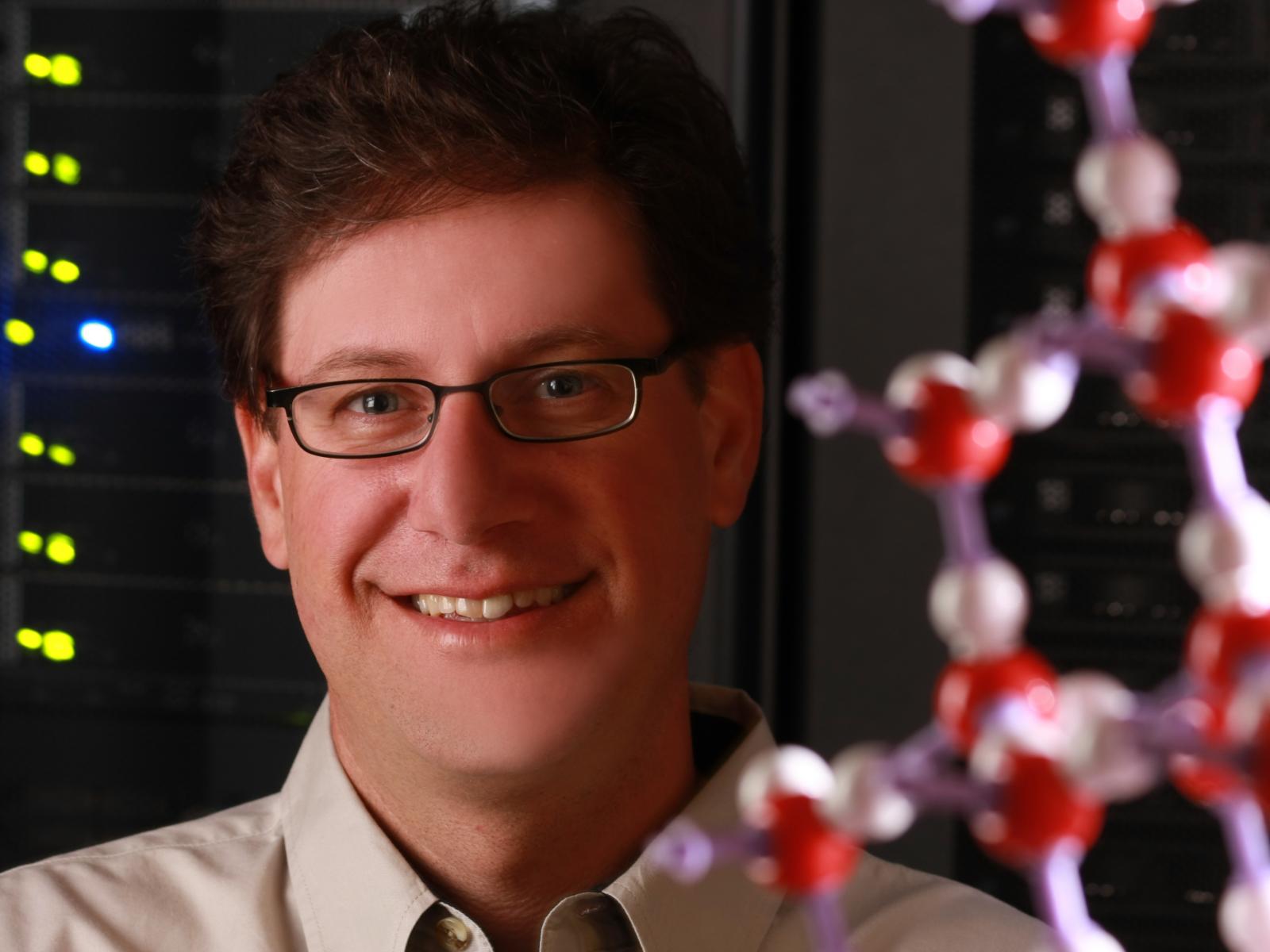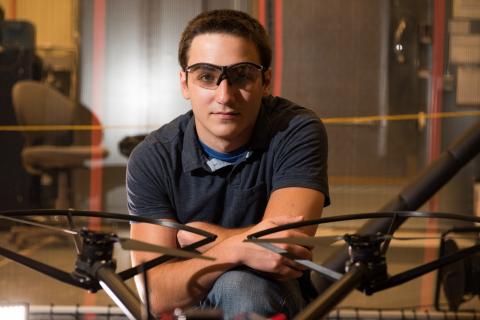WSU, UW and PNNL: Rival Schools Make for Good Partners

Pacific Northwest National Laboratory scientists Chris Mundy and his colleagues are using supercomputers to shed light on complex chemical reactions. Mundy also has a joint appointment agreement in place with the University of Washington, which allows him the opportunity to spend time at that institution collaborating with its faculty and students. He is one of nearly 25 researchers who have appointments at the UW or Washington State University. There are also about 15 faculty members at those universities who have joint appointments at PNNL.
(Pacific Northwest National Laboratory)
Autumn has definitely arrived, and along with it falling leaves and football rivalries.
Many of us are looking forward to next month's Apple Cup as the Cougars and Huskies battle for regional pigskin pride. At the Department of Energy's Pacific Northwest National Laboratory, however, we strive to bring these fierce gridiron competitors together to collaborate on research and development.
PNNL has a long history of working with Washington State University and the University of Washington individually. But increasingly we are pursuing partnerships that involve all three of the state's leading research institutions. To facilitate teaming, we signed an agreement last year formalizing our intent to collaborate on complex challenges and to provide additional research and training opportunities for students.

As in any partnership, we seek to combine our individual strengths to achieve things we could not do alone. This will allow us to make bigger contributions to our state, our nation and the world. It also will enhance the state's reputation as a scientific and engineering powerhouse. Recognizing that people are the key to successful collaborations, we will expand the number of joint appointments we have among our respective institutions. Along the way, we will develop a pipeline of scientists and engineers, ensuring that we will have the talent needed for tomorrow's challenges.
With this pipeline in mind, PNNL and WSU just launched a Distinguished Graduate Research Program for students working on their Ph.Ds. These students will do their coursework at WSU and gain hands-on research experience at PNNL. The 12 students in the first cohort are working in a variety of technical fields, including computer science and chemical engineering.
Another example of our partnership with WSU is the Bioproducts, Sciences, and Engineering Laboratory, known as BSEL. This $24 million facility at WSU Tri-Cities in Richland was dedicated in 2008 and represents a joint effort between the state and Department of Energy. It brings together WSU and PNNL staff in the area of biofuels. In one collaboration at BSEL, two WSU Ph.D. chemical engineering students are working on a PNNL project to upgrade ethanol produced from biomass. They are exploring how to transform this ethanol into higher value components, such as chemicals for making plastics.

We also have a lot going on with UW. For example, UW and PNNL researchers are developing novel 3-D printing technologies to fabricate structural components with mechanical properties that cannot be made by traditional manufacturing processes. They might be used, for example, to make better batteries.
Our collaboration with UW in materials research extends to the design and synthesis of new kinds of materials. These include semiconductor nanowires for electronic and photonic applications, as well as bio-inspired, protein-like molecules for water purification. Students from several disciplines have had the opportunity to combine their expertise in synthesis and simulation with PNNL's advanced microscopy and high-performance computing to do some amazing things.
PNNL, WSU and UW also work together on big problems that demand our collective capabilities, including helping create the electricity grid of the future. For example, we are collaborating on a revolutionary approach to energy management called "transactive control." Our research explores how to integrate "smart" buildings with the grid and use financial incentive signals and dynamic control techniques to better manage how and when energy is used, reducing costs to consumers and creating flexibility for the grid.
Looking ahead, PNNL will work even more closely with UW, WSU and other universities in the region on challenges ranging from clean energy to precision medicine. We will leverage our resources, combine our strengths and deliver results that will improve the lives of our fellow citizens. And whether you wear crimson or purple on game day, we all can agree on the importance of working together to advance scientific discovery and fuel technological innovation.
Steven Ashby, director of Pacific Northwest National Laboratory, writes this column monthly. To read previous Director's Columns, visit pnnl.gov/news and filter by Director's Columns in our Latest Stories.
Published: October 22, 2017